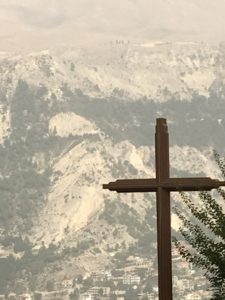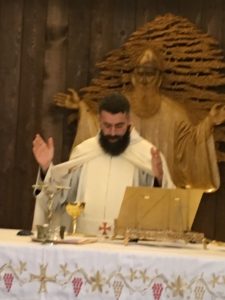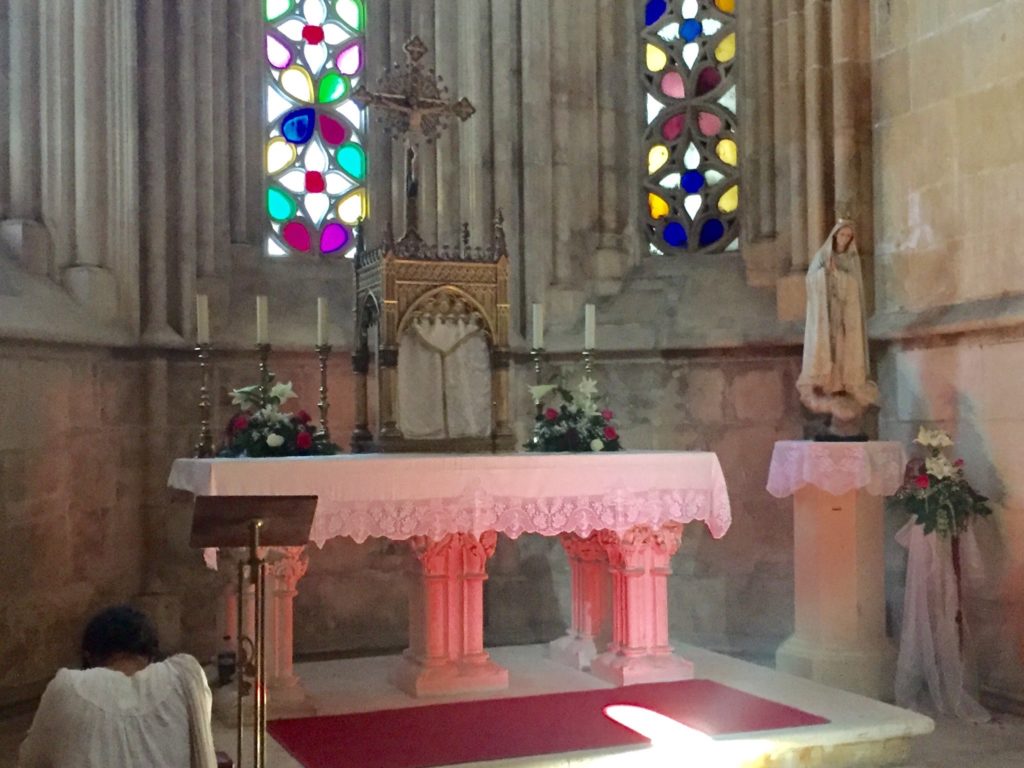NOTE: Father Robert Elias Barcelos, OCD is currently leading a Holy Land Pilgrimage, organized by Beth Maddatu, ocds and Adriatic Tours. I have loosely transcribed his homilies so that readers can participate in the journey. – Teresa Linda, ocds
Saint Charbel’s Birthplace (Kafra, Lebanon, in the Quadisha Valley)

A reading from the second letter of Saint Paul to Timothy (4:10-17)
Beloved: Demas, enamored of the present world, deserted me and went to Thessalonica, Crescens to Galatia, and Titus to Dalmatia. Luke is the only one with me. Get Mark and bring him with you, for he is helpful to me in the ministry.
Alexander the coppersmith did me a great deal of harm; the Lord will repay him according to his deeded. You too be on guard against him, for he has strongly resisted our preaching.
At my first defense no one appeared on my behalf, but everyone deserted me. May it not be held against them! But the Lord stood by me and gave me strength, so that through me the proclamation might be completed and all the Gentiles might hear it.
Our pilgrimage of Phoenicia (Lebanon) gives us an opportunity to study a saint who lived only for God.
While Demas and most of his companions deserted Paul, Saint Charbel, enamored with Christ, deserted the world to seek friendship with God. We’re here now, the highest mountain in the Middle East, where Saint Charbel was born and raised.
God, who knows us before we were conceived, chose Saint Charbel to be born in this region, foreshadowing that he would be born to the heights of holiness, the summit of what it means to live in the silence of God — just like Mary and St. Therese, who lived their lives, hidden and in union with the Holy Trinity.
Those seeking holiness must experience Jesus as Savior and have a personal encounter with Him. This intimate relationship allows our new holiness to be stored in us through Christ’s sacred humanity. The psalmist proclaims, “Your friends make known, oh Lord, the glorious splendor of your kingdom.” We are called to be true friends of Jesus.

St. Charbel wrote very little; most of what we know about him comes from oral tradition, but when we see his icon, we see that he is in prayer that radiates peace. He is looking down in humble awareness that God abides in him – the kingdom of God within. As a prophet for the kingdom of God, Saint Charbel embodies what we value in the life of the spirit.
In the gospel, when Jesus sends his disciples out to witness to the kingdom, he says to them,”Carry no money, bag, no sack, no sandals.” In other words, he asks us to be detached of all material details so that you can focus on the one thing necessary – allowing the peace of Christ to be in your soul.
Embrace discomforts and challenges and allow peace to abide in you, a peace that comes through the holy spirit and the supernatural world – this is what St. Charbel radiates, the abiding embrace of God within us.
We, like the disciples, are sent out like lambs among wolves. However, Saint Paul didn’t allow the wolf bites to get infected, but brushed them off of himself. “May it not be held against them,” he writes. Paul rid himself of resentment, and the desire to get back at Demas, Alexander, and others who hurt or abandoned him – he leaves everything in the Lord’s hands.
Jesus also warns the believers to be careful against those wolves. We must love one another but be as wise as a serpents. Know who you’re dealing with, and be on guard of anyone who can steal your peace.
In his letter to Timothy, St. Paul was deeply disappointed because the people he expected to help, hurt him yet he didn’t allow his disappointment to discourage him and bring him down. As a result of his affliction, God gave him strength.
Where Paul’s companions were lacking, God provided peace. May this peace define what it means for you to follow in the footsteps of Jesus.
During pilgrimage, we bring everything with us – our family, our local community, our nation – and we ask Jesus Immanuel into that. Let us be open to an unprecedented encounter with Jesus, that He may make our hearts His Holy Land. Amen.








